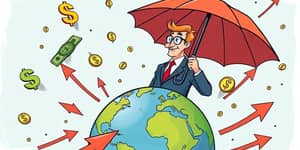Consumer behavior shapes the economic landscape in every corner of the globe, influencing growth rates, business strategies, and policy decisions. Understanding this phenomenon is essential for anyone seeking to grasp the forces propelling modern markets.
Definition and Scope of Consumer Behavior
At its core, consumer behavior encompasses the decisions, preferences, and habits that guide individuals’ spending choices. From daily necessities like groceries to occasional indulgences like luxury travel, these choices form the bedrock of global economic activity.
In advanced and emerging economies alike, the majority of global GDP hinges on consumption. When households earn income, they allocate it across essential and discretionary categories, directly influencing production, employment, and innovation.
The Expanding Global Consumer Class
As incomes rise worldwide, more people join the ranks of active consumers. By 2025, projections indicate that over 100 million new consumers will join the global consumer class, pushing its total past 4.4 billion—now outnumbering the 3.6 billion people classified as poor.
Collectively, the middle and upper classes will spend more than $60 trillion annually, with an increasing share directed toward non-essentials like electronics, leisure, and travel as disposable incomes grow.
By 2035, the consumer class is expected to reach 5.7 billion out of an 8.7 billion global population, underscoring the accelerating shift toward a consumption-driven world economy.
Consumer Spending by Country and Global Totals
Annual consumer outlays vary widely by nation. In 2025, the United States leads with $18.8 trillion in spending, followed by China at $7 trillion. Germany, India, and the United Kingdom each spend over $2 trillion annually. On a per capita basis, global spending averages about $318 per person.
Despite slowing growth and inflationary pressures, total nominal global household spending is set to increase by $2 trillion in 2025. On a real basis, after adjusting for inflation, spending will still grow by approximately $1.4 trillion—around $175 per person.
Who Spends the Most? Demographics and Segments
Generation X (born 1965–1980) takes the lead in global spending, expected to outlay $15.2 trillion in 2025, surpassing millennials, baby boomers, and Gen Z. Yet younger cohorts exhibit distinct priorities: they show greater support for sustainable products and comfortable adoption of digital payments and subscription models.
Urban consumers, in particular, drive trends across markets, blending tradition with emerging preferences for eco-friendly goods and frictionless e-commerce experiences. This demographic shift highlights how shifting priorities shape spending landscapes worldwide.
Key Trends in Consumer Spending
- Value reassessment amid rising inflation: 79% of consumers are trading down—seeking better deals, delaying purchases, or switching brands to stretch budgets.
- Category balancing: Over one-third of global consumers economize in essentials to splash out on discretionary treats like travel or electronics, while nearly 20% will cut essentials to afford non-essentials.
- Post-pandemic indulgence persists: Streaming services, home improvement, and wellness remain top categories, especially in emerging markets.
- Digital payments and frictionless e-commerce adoption accelerates, fostering growth in online retail and service sectors.
- Sustainability premium: 58% are willing to pay more for eco-friendly products, and nearly half expect brands to prioritize sustainable practices.
Regional Differences and Country-Specific Nuances
While the U.S. maintains its dominant position, China is rapidly closing the gap. Emerging markets—India, Brazil, and various African nations—are expanding their consumer classes at record pace, even if per capita spending remains lower.
Inflation, geopolitical tensions, and supply chain disruptions have tempered growth projections compared to pre-pandemic forecasts. Yet the overarching trajectory remains upward, driven by resilient consumer demand and rising incomes in developing regions.
What Consumers Buy: COICOP Spending Categories
The Classification of Individual Consumption by Purpose (COICOP) breaks spending into twelve categories. Tracking these segments provides insights into economic health and shifting tastes:
- Food and non-alcoholic beverages
- Alcoholic beverages and tobacco
- Clothing and footwear
- Housing, water, electricity, gas, and other fuels
- Furnishings, household equipment and routine maintenance
- Health
- Transport
- Communication
- Recreation and culture
- Education
- Restaurants and hotels
- Miscellaneous goods and services
Socio-Economic Impact of Growing Consumption
As individuals ascend into the consumer class, economies evolve from meeting basic needs to delivering diverse experiences and goods. This transition benefits sectors such as entertainment, travel, healthcare, personal technology, and financial services.
Increased consumer spending fosters business innovation and expands global supply chains. Companies respond with new products, efficient logistics, and advanced marketing, driving employment and technological progress. Indeed, economic resilience through consumer innovation has become a hallmark of modern markets.
Conclusion: Charting the Future of Global Consumption
Consumer behavior remains the cornerstone of worldwide economic growth. As the global consumer class continues to swell, spending patterns will evolve—shaped by demographics, technology, and sustainability concerns.
By understanding the dynamics of consumption—from the rise of digital payments to the premium on eco-friendly products—governments and businesses can better anticipate market shifts and foster inclusive growth. Ultimately, the story of tomorrow’s economy will be written by the choices people make today, with disposable income fueling non-essential purchases that drive innovation and prosperity on a global scale.
References
- https://www.weforum.org/stories/2025/07/against-the-odds-how-has-the-world-achieved-middle-class-dominance/
- https://www.gwi.com/blog/consumer-spending-trends
- https://www.emarketer.com/content/gen-x-leads-global-consumer-spending-2025
- https://worldpopulationreview.com/country-rankings/consumer-spending-by-country
- https://www.mckinsey.com/industries/consumer-packaged-goods/our-insights/state-of-consumer
- https://www.statista.com/outlook/co/consumption-indicators/worldwide










